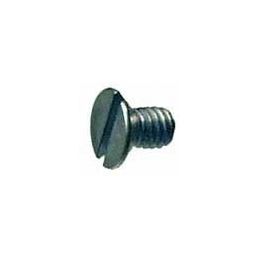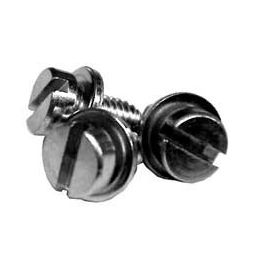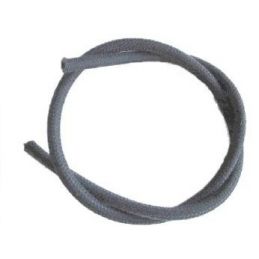In this article I would like to talk about air cleaners. There are a lot of them out there, so how do you know which ones you should be using? First and foremost, what are you doing with the car? Is this a street car that never sees the dirt? Is this a dirt car? Sand car? Maybe a drag car? This will determine what you should run for air cleaners or if you should run any at all.
Let's start with the street cars. What do you have for a carb or carbs? If you have a stock carb then I have to say it’s hard to beat the factory air cleaner. Yes, it’s big and bulky and the oil bath ones are messy, but they work well. Don’t have one and can’t find a good used one? Then I would find one that has a rubber neck so it makes a good seal on the carb neck. A lot of the aftermarket air cleaners have a metal bottom with slots to expand over the carb. I find they suck dirt around this area and are pretty much junk. That’s all there was for years, but now some companies are making ones with the rubber neck.
If you have dual carbs, like IDFs, there is no choice but to use a metal base air cleaner. A lot of times the kits come with really thin tinny bases and tops. I usually throw the bases away and get some thicker aluminum ones. That way I have a good seal to the base and carb. One note here on IDFs is that the kits come with velocity stacks. I don’t run them when running a 3 ½ inch tall air cleaner. I have found that IDFs like 4 inches of “free air” above the auxiliary vent. That’s the tube in the middle of the throat. If you put the stack on and then the air cleaner you have about a ½ inch. If you have a 6 inch tall element go ahead and run the stacks.
Now let's talk about the breather tube that comes from the oil filler. On stock air cleaners the breather hose comes into the air cleaner housing before the filtering. In other words, that nasty oil soaked air gets filtered out to just air. On the aftermarket air cleaners it comes into the air cleaner after the element. So what you’re doing is sucking oily air down your carb. Does it work? Sure, but not my favorite thing ever. I see a lot of cars with that tube just shoved down to the ground. Well that kind of works, but that tube will suck dirt. That’s why the factory cleaner has a boot with a slot cut into it on the factory metal breather tube. It works like a valve. When there is pressure, the slot lets out the pressure, when it’s sucking, the slot closes up. What I do here is put a little filter on the end of the hose. I don’t run it into the air cleaner. Whatever you do, don’t just plug the hose. The engine case has to breathe. If it can't then it will blow oil out of everywhere it can, like the front pulley.
Now let’s talk about dirt or sand cars. I had a customer that we built a sand rail motor for. I told him that his air cleaners where junk and wouldn’t keep the sand out. He decided to run them anyway. He took the fresh motor to the dunes and the next Monday was at my shop with his motor complaining that it had no compression. I already knew what had happened but kept my mouth shut. I tore the motor apart with him standing next to me, telling me I was going to pay to fix it. I took the air cleaner top off and you could just see the sand sitting on top of the carbs. I pointed that out, but still kept my mouth shut. Then I took off the carbs and you could see sand in the intake ports. Then I took the head off and the top of the cylinder had a big ridge in it and the area that the rings rode in was completely polished. His response was “What causes that?” I asked him what do you have when you glue sand to a piece of paper? Answer, sand paper. Take that sandpaper and go up and down the cylinder a million times. What the hell do you expect? With your wonderful air cleaners, you sanded the hell out of the cylinders. The next statement from me was “I told you not to run these filters and no I’m not paying to replace parts you destroyed with your air cleaners”. He saw my point, so I rebuilt the motor again and put good air cleaners on it. Moral of the story is that it doesn’t take long to sand out your motor, so do all you can to keep it out. If you’re running a stock carb they make a good hooded air cleaner. The only mod I do is use a rubber washer under the wing nut and I drill the stud above the wing nut and use a safety pin through the hole. This makes sure the wing nut doesn’t fall off. On dual carbs, again use good thick bases. The other trick here on a stock carb or dual carbs is to put grease on the top and bottom of the element to make sure you get an airtight seal. Also, if you can get ones that fit use outerwears. On my off road car with dual carbs I use the outerwears and I also built a hood to go over the air cleaner. If you’re going to make hoods, make sure you make them larger than the air cleaner itself so the air can get to the element.
What about drag cars? Well this is a mixed question. When motors are up there in RPMs they require a lot of air, so most guys don’t run an air cleaner. Keep in mind, these motors come apart all the time and cylinders are replaced way more often than a street car. So my suggestion is, if you are not going all out, run air cleaners if you can. It will just save you money in the long run. If you’re not going to, I get it. Just don’t complain that your going through cylinders. It’s just part of the deal at that point.
In conclusion, if you’re running a stock carb use a stock air cleaner or at least a rubber neck aftermarket air cleaner. If you’re dual carb, make sure you get a good air cleaner and not the thin tin one. If you're playing off road at all do what you can to keep the dirt out of the intake. If you’re a drag car, well, you know the deal.







